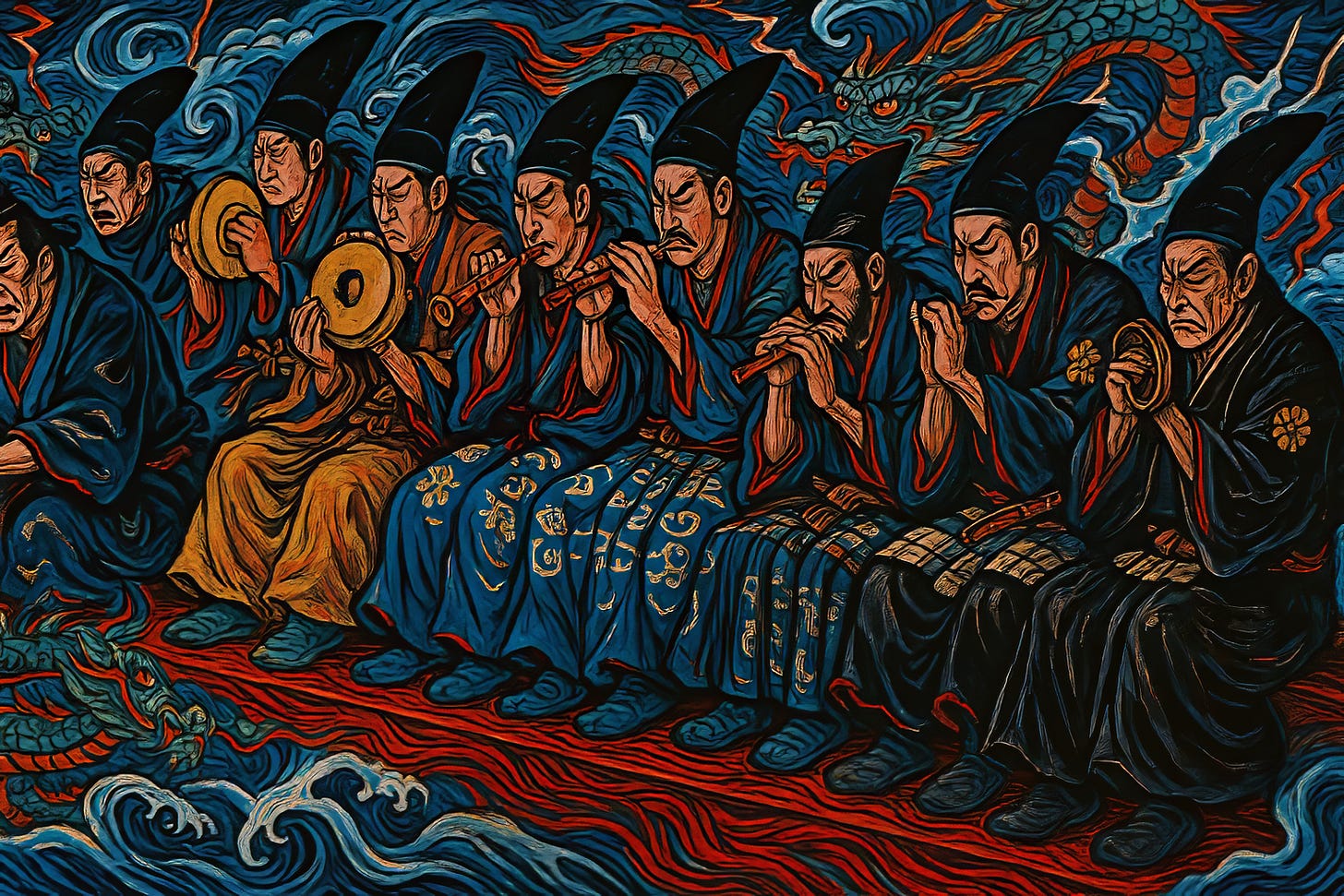The Roots of Yakuza
Ukarebito-Gorotsuki-Toseinin-Bakuto-Kyōkaku
Yakuza. Many readers have probably heard this name, yet few have actually seen one. I was born in Osaka, an area once dense with Yakuza, so until about twenty years ago there was an office nearby and I often had chances to see gangsters. However, today’s Yakuza have broken away from old stereotypes; most offices have closed, and in daily life they are indistinguishable from businessmen, so even Japanese people cannot tell who is Yakuza. Where, then, does this entity called Yakuza originate? Their history is so fascinating that I will share it over several installments.
First, at the origin of the Yakuza stands the figure known as “gorotsuki” (ごろつき, 無頼漢). The keen folklorist Orikuchi Shinobu (1887‑1953) revealed that although gorotsuki were reviled as society’s villains, there was a time in Japanese history when they occupied a major social role and even exerted great power over artistic movements. For example, the famous Japanese performing art kabuki traces its roots to gorotsuki. Orikuchi argued that these “outsiders” were not mere criminals but crucial agents who shaped culture and order during transitional eras, presenting a completely different perspective.
In his 1930 essay “Gorotsuki no Hanashi,” Orikuchi writes that gorotsuki first appeared in the Kamakura period (1185‑1333). Emerging in mid‑Kamakura, they spread through the Muromachi period (1336‑1573) and were most active during the Sengoku wars (1467‑1615). In that era of samurai conflict they wandered as ronin (浪人) or wild mercenaries—groups “belonging nowhere.” Sometimes they won over warlords and served as soldiers for hire, greatly aiding nationwide unification. In a sense, a warlord needed the skill to marshal these groups to defeat rivals.
Orikuchi shocked contemporaries by pointing out that some gorotsuki achieved spectacular advancement during the Sengoku age; among later daimyō (大名) and kazoku (華族) peers were quite a few whose ancestors sprang from these ranks. Because that period—symbolized by Toyotomi Hideyoshi (豊臣秀吉), who rose from peasant stock—allowed extraordinary social mobility, wanderers and gorotsuki could climb the ladder and eventually enter the samurai class, playing a part in social fluidity. Those who failed to seize such chances became disadvantaged once the unified Tokugawa shogunate ushered in three centuries of rule; under its centralized policing, gorotsuki could no longer operate openly.
Orikuchi traced the gorotsuki line even further back, identifying ancient itinerant people called “ukare‑bito” (うかれ人) who roamed Japan carrying foreign‑derived faiths and entertainments—early forms of song, dance, and puppet theater. These wanderers later settled at transport hubs and made a living from performance. Modern Yakuza also have roots in such entertainment; knowing this link between performing arts and outlaws clarifies many present‑day issues in Japan.
Among these wanderers were lower shrine priests who lost work during centralization and farmers who fled heavy taxes, joining together while hiding in mountains and traveling from place to place. From the late Heian period (794-1185) onward, destitute Buddhist monks, onmyōji (陰陽師), and shugensha (修験者) skilled in occult arts appeared, and previously separate itinerant groups merged to form a curious hybrid culture. As aristocratic rule and temple power declined through the Heian era, lower‑class workers once bound to temples were freed; they took their inherited rituals and arts on the road to earn a living. These diverse wanderers mixed and assimilated, and those who survived fierce competition eventually coalesced into what came to be called gorotsuki.
After serving as mercenaries, gorotsuki lost their purpose when the Edo period brought peace and began calling themselves “mushoku toseinin” (無職渡世人)—“jobless wayfaring men.” From these circles emerged “bakuto” (博徒), professional gamblers. Gambling was an outgrowth of entertainment, and in the early Yakuza story bakuto are key; within that world they were called “kyōkaku” (侠客)—men of “ninkyō” (任侠), chivalry and human feeling. Japanese cinema later loved this material, propelling actors Tsuruta Kōji and Takakura Ken to stardom in the mid‑1960s. In truth, ninkyō was simply the historical gorotsuki under a new signboard.
A notable feature in bakuto life was the “oyabun‑kobun” (親分・子分) hierarchy. Orikuchi linked this to the rural “oyakata‑kokata” (親方・子方) custom, where prominent households took village youths as quasi‑adoptees. Such pseudo‑family bonds became the organizational spine for gorotsuki, who lacked both hometown and real family. In Edo’s burgeoning towns, a new business also arose: the “machiyakko” (町奴)—town gorotsuki—who supplied laborers to samurai estates and, in return, ruled locally as “oyabun.” Similar place‑based power structures sprouted nationwide. Far from today’s criminal image, many kyakaku were hailed by townspeople as heroes resisting oppressive authority and won deep trust. This is the root of how modern Yakuza groups secured their own spheres of control—though government viewed them as troublesome.
As this ground matured, social unrest in late Edo saw these men form bands—the prototypes of modern Yakuza—opening gambling halls and amassing wealth. Large famines eroded dependence on the shogunate and domains, creating gaps that outlaws exploited, and the culture of gorotsuki spread rapidly across the nation. Crucially, under strict Edo regulation they stood outside official society: not listed in village registers, they were literally “people who did not exist.” They exploited that peculiar status to advance swiftly.
Next time, we will examine how this legacy leads directly to the modern Yakuza.



